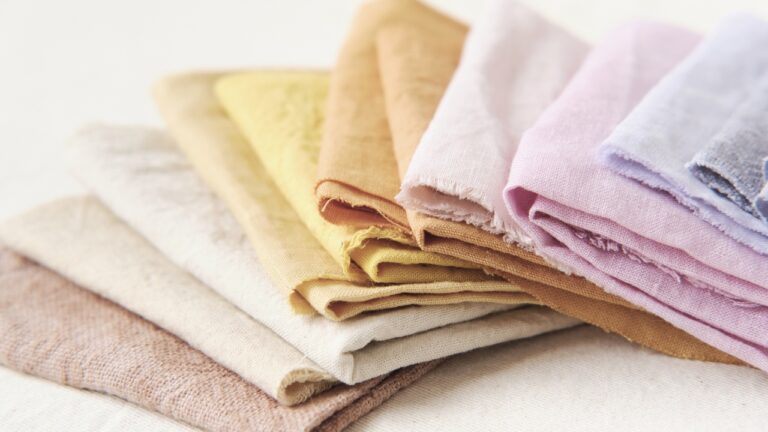7 Most Popular FABRICS FOR QUILTING With
Here are the best fabrics for quiltmaking and DIY quilts. Quilting is an art form that combines creativity, precision, and functionality.
Quiltmaking is often associated with cottagecore niches due to its emphasis on handmade, cozy, and nostalgic elements.
The intricate patterns, natural fabrics, and the warmth of quilts evoke a sense of simplicity and rural charm, aligning seamlessly with the cottagecore ethos of embracing a simpler, more traditional lifestyle.
One of the key factors that determine the success of a quilt is the choice of fabric. The right fabric can enhance the overall aesthetic appeal, durability, and comfort of the quilt.

With a plethora of options available, it can be overwhelming to select the best fabrics for quiltmaking. There are a ton of fabric collections for quilts out there, and we will help break them down for you.
In this article, we will explore the seven best fabrics for unique handmade quilts and delve into why they are the optimal choice for creating stunning quilts.
Once you choose your perfect fabric, head on over to our helpful blog post about the best fabric shops on Etsy.
Best Fabrics For Quilting
1. Cotton Fabric For Everyday Quilting
Cotton is the main fabric for quilting and remains a popular choice among quilters worldwide.
Cotton is a natural fiber known for its breathability and comfort. When used in quilts, it allows air circulation, which helps regulate body temperature.
This is especially important for a good night’s sleep, as it prevents overheating and keeps the body cool in warmer temperatures. Cotton’s soft and smooth texture also adds to the overall comfort of the quilt.
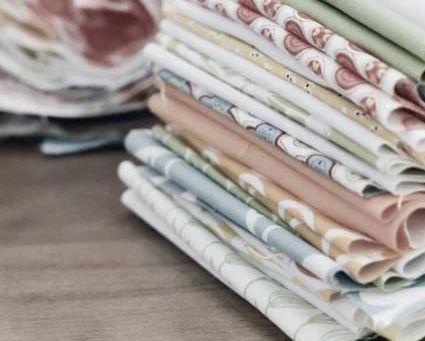
Additionally, cotton is easy to care for, durable, and tends to soften over time, making it an excellent choice for quilts that are meant to last and be enjoyed for years.
When selecting cotton fabric for quiltmaking, consider high-quality quilting cotton with a tight weave for the best results.
2. Flannel For Quilting
Flannel is a cozy and soft fabric that adds warmth and comfort to quilts. It is commonly used in projects intended for colder climates or for creating snugly quilts for cottagecore quilting ideas.
Flannel’s brushed surface creates a soft and fuzzy texture that is fantastic for snuggling up during chilly evenings.
It comes in a variety of designs and colors, making it a versatile fabric choice for both traditional and modern quilt designs.
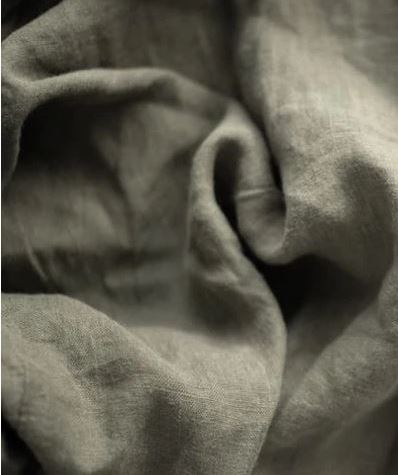
3. Batik For Unique Quilting Patterns
Batik fabric is renowned for its exquisite beauty and unique patterns. Originating from Indonesia, this fabric is created using a wax-resist dyeing technique.
The intricate designs and vibrant colors of batik fabrics make them a favorite among quilters seeking to add a touch of elegance and cultural richness to their quilts.
The tightly woven cotton used in batik fabrics ensures their durability, and their distinctive patterns can be showcased through various quilting techniques.
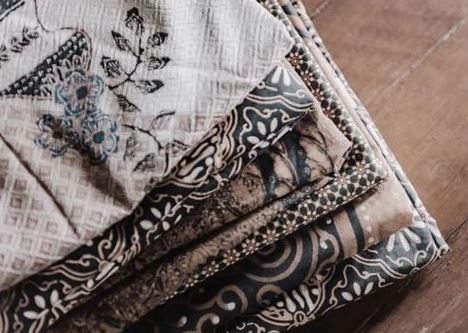
4. Linen For Breathable Quilting
Linen fabric is prized for its natural, luxurious texture and breathability. While not as commonly used in quilting as cotton, linen offers a unique aesthetic that appeals to many quilters.
Linen’s distinct drape and crispness bring a sophisticated touch to quilts, adding visual interest and texture. It is particularly well-suited for minimalist and modern quilt designs, offering a fresh and contemporary look.
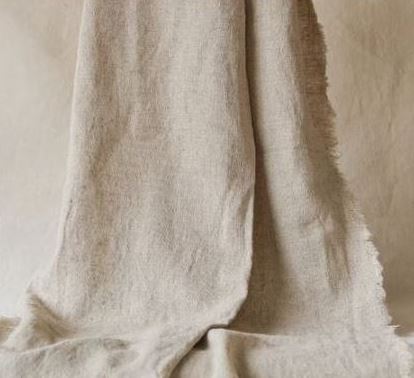
5. Silk For Luxury Quilting
Silk, known for its lustrous appearance and smooth feel, brings elegance and sheen to quiltmaking.
Quilts made from silk fabrics exude a sense of luxury and can be visually stunning. Silk’s natural sheen and delicate texture make it an excellent choice for art quilts and projects that prioritize aesthetics over heavy use.
While silk quilts require special care and gentle handling, they are worth the extra effort for their undeniable beauty.
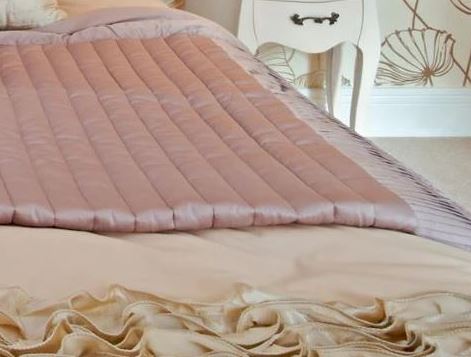
6. Wool For Warm Quilts
Wool fabric, derived from the fleece of sheep, is cherished for its warmth and insulating properties.
It is a fabulous choice for quilts intended for colder climates or to provide cozy comfort during winter months.

Wool highly durable, making it an heirloom quality option for quilts. Quilts made from wool are known for their unique texture and can showcase intricate quilting designs exceptionally well.
How to use wool: You can crochet squares and incorporate them into your design here and there with other more sturdy fabrics.
7. Voile For Delicate Quilts
Voile is a lightweight and semi-transparent fabric that adds a delicate and ethereal quality to quilts.
Often made from cotton or silk, voile fabric is soft, sheer, and possesses a subtle drape.
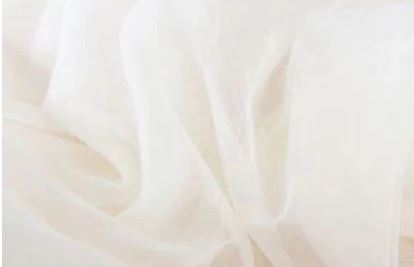
It is perfect for creating airy and dreamy quilts or for adding a touch of elegance to quilt borders and accents to your square pieces here and there.
Voile fabric is available in a range of colors and prints, allowing quilters to explore some unique possibilities for artisan quilts.
In Conclusion:
The choice of fabric plays a crucial role in the success of a quilt. By selecting the right fabrics, you can elevate the aesthetic appeal, durability, and comfort of your quilt.
The fabrics discussed in this article—cotton, flannel, batik, linen, silk, wool, and voile—are exceptional choices for quilt making.
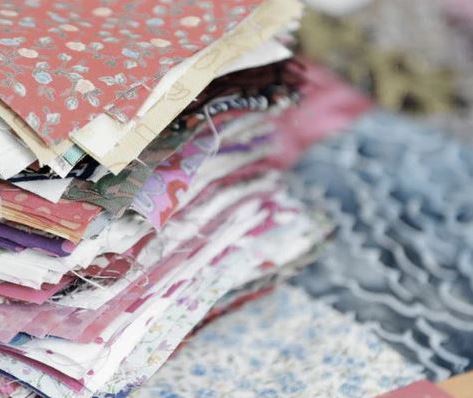
Tips For Choosing The Right Fabric For Quilts
1. Consider Fabric Content:
- Cotton is a popular choice due to its breathability, durability, and ease of care. It is comfortable, holds color well, and has a soft feel. Synthetic fabrics may not breathe as well.
2. Check Fabric Quality:
- Choose high-quality quilting cotton with a tight weave. This ensures that the fabric is durable and will withstand the wear and tear that comes with quilting and regular use. Quality fabric is also less likely to fray excessively, making it easier to work with.
3. Consider Print Scale and Pattern:
- Think about the scale of the prints and patterns. Large-scale prints or intricate patterns may get lost or become overwhelming in smaller quilt blocks. Similarly, small-scale prints may not have the desired impact in larger quilt blocks. Pay attention to the overall design you want to achieve and how the prints will work together.
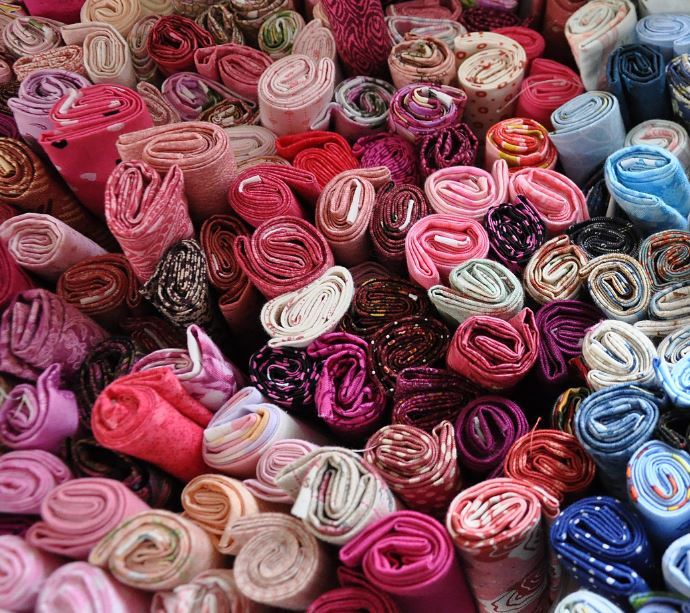
4. Color Coordination:
- Pay attention to color coordination. Select a color palette that complements your overall design or theme. Consider the mood or atmosphere you want to create with your quilt. Mixing solids with prints can add visual interest, but ensure that the colors harmonize well together.
5. Pre-Wash Fabrics:
- It’s advisable to pre-wash your fabrics before starting your quilt project. This helps to remove any sizing or shrinkage that may occur during washing. Pre-washing also prevents potential bleeding of colors later on, ensuring that your finished quilt maintains its appearance over time. Keep in mind that some fabrics, like precuts or specialty fabrics, may not be pre-washed due to potential fraying.
Remember to trust your instincts and choose fabrics that you genuinely enjoy working with and looking at, as quiltmaking is a creative and personal endeavor.
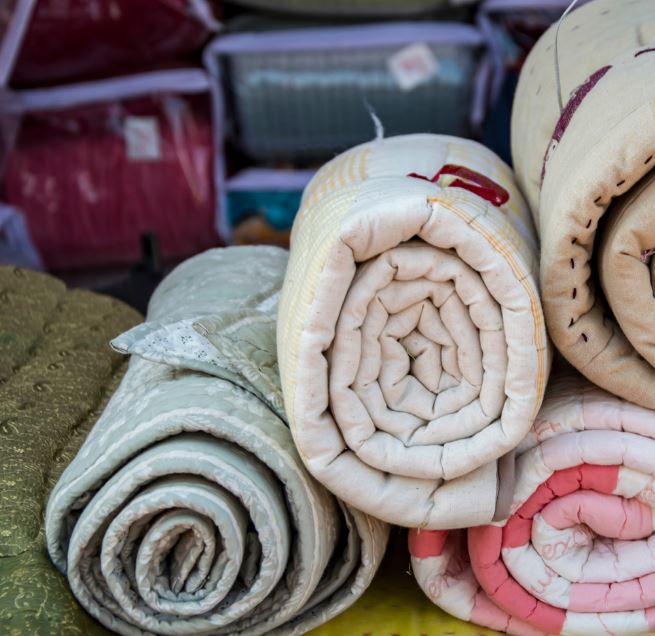
Quilting Fabric FAQ’s
1. Is Cotton the Best Fabric for Quilts?
- Answer: Yes, cotton is widely considered the best fabric for quilts. It offers breathability, durability, and a soft feel. It is easy to work with and holds color well, ensuring your quilt remains comfortable and visually appealing.
2. How Do I Determine Fabric Quality for Quiltmaking?
- Answer: Look for high-quality quilting cotton with a tight weave. This ensures durability and makes the fabric easier to work with. Quality fabric is less likely to fray excessively, contributing to the longevity of your quilt.
3. Should I Consider the Scale of Prints and Patterns?
- Answer: Absolutely. Consider the scale of prints and patterns based on your quilt design. Large-scale prints may dominate smaller blocks, while small-scale prints might get lost in larger blocks. Striking a balance ensures a visually appealing and cohesive quilt.
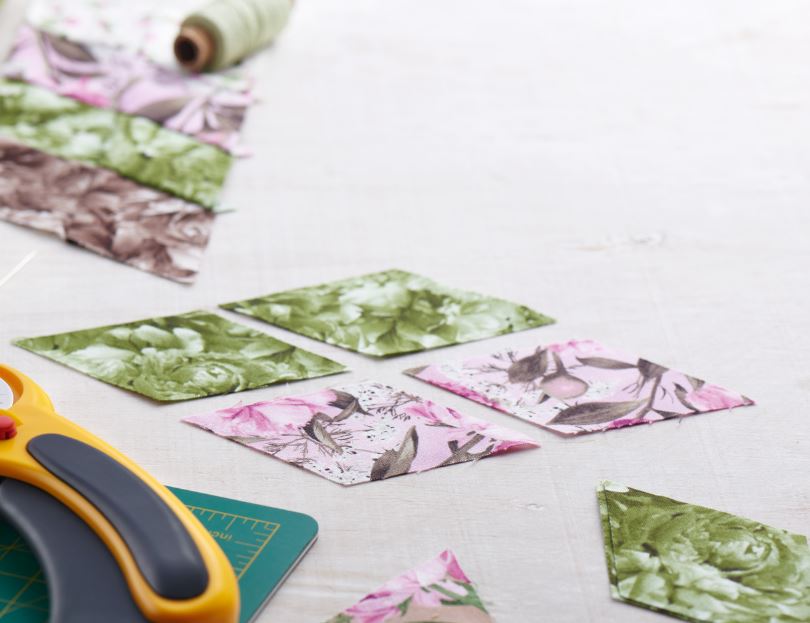
4. How Important Is Color Coordination in Quilt Fabric Selection?
- Answer: Color coordination is crucial. Select a color palette that complements your overall design or theme. Consider the mood you want to convey with your quilt. Mixing solids with prints can add interest, but ensure the colors harmonize well to create a cohesive look.
5. Do I Need to Pre-Wash Fabrics Before Quiltmaking?
- Answer: Yes, it’s advisable to pre-wash fabrics. This helps remove sizing, potential shrinkage, and minimizes the risk of color bleeding during later washes. Note that some specialty fabrics may not be pre-washed due to concerns about fraying.
Each fabric possesses unique qualities that make it suitable for various quilt styles and preferences.
Whether you are a beginner or an experienced quilter, experimenting with these fabrics will undoubtedly enhance your quilting journey.
So, go ahead, explore the vast world of fabrics, and create stunning quilts that are as beautiful as they are functional.
How you can support this blog:
🏡 If you would like to support our blog, we would love it if you would share this article on your social media or link back to this article from your own blogs and websites. We would really appreciate that.

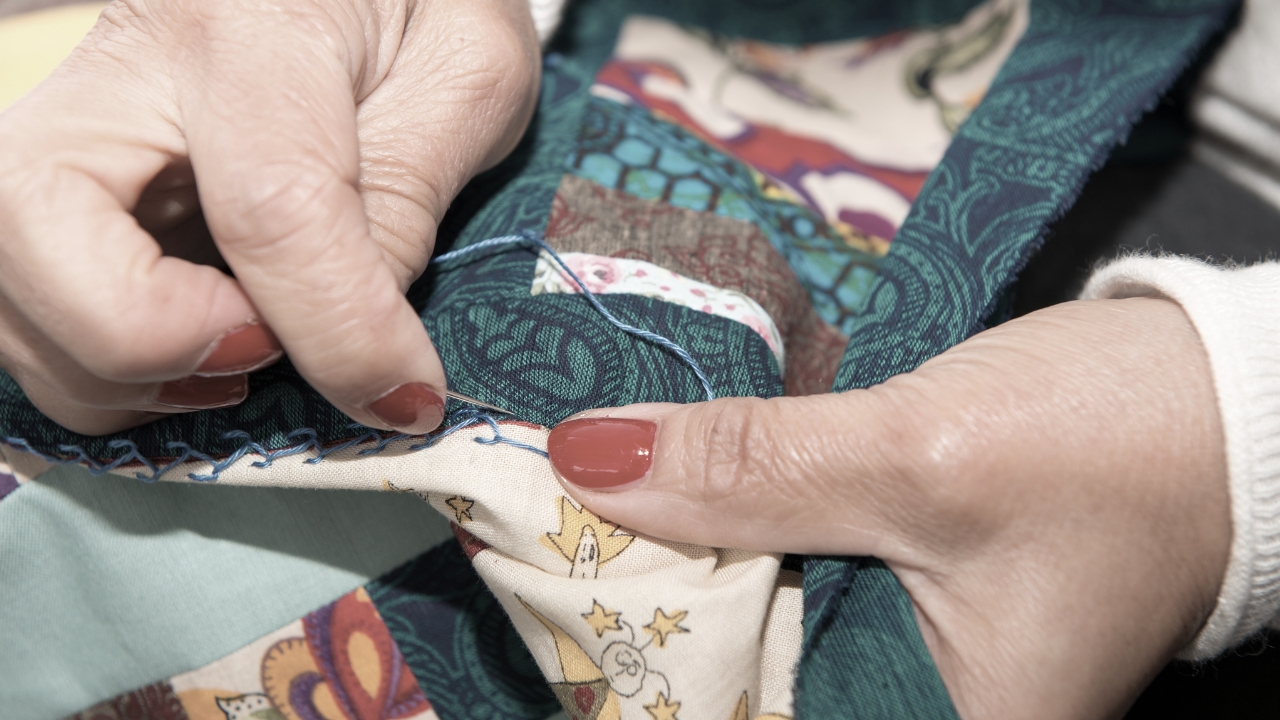
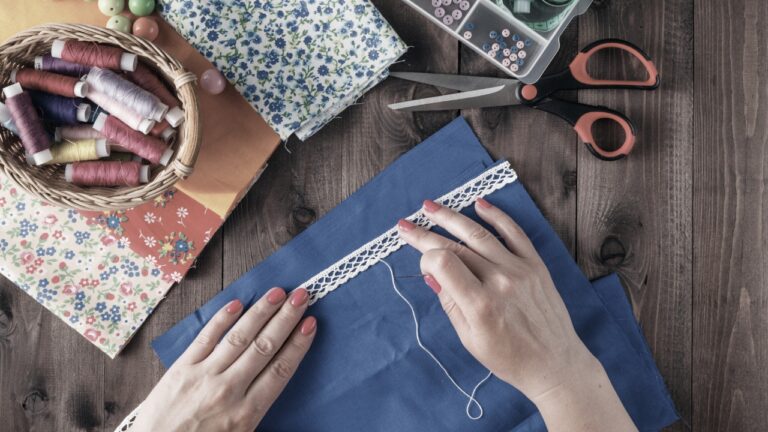
![15 Best Etsy Quilting Shops [2024]](https://cozycottagecoreliving.com/wp-content/uploads/2023/12/best-etsy-quilting-shops-cover-768x432.jpg)
